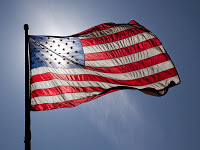Memorial Day has been celebrated on the last Monday of May since 1971. It is the federal holiday that honors those that have died serving the United States in war. Here’s a brief history behind this holiday.
The beginning of Memorial Day can be traced back to an observance of those that died during the Civil War in the 1860’s. In 1868, Major General John Logan, a U.S. Congressman, declared that May 30th be a day of memorial for those who had fallen in the Civil War. This proclamation was only for the year 1868, but areas around the country continued to observe May 30th as a day of remembrance. That date was believed to be picked because flowers would be in bloom throughout the country. Logan intended for the day to recognize only the Union dead from the war, but eventually people extended it to both sides.
It wasn’t until after World War I when the day was expanded to include the dead of all wars American’s had been involved in. President Lyndon Johnson declared that the birthplace of Memorial Day was in Waterloo, New York, since they had celebrated the holiday on May 5, 1866, honoring local veterans who had fought in the Civil War. Flags were flown at half-mast and businesses closed down.
In 1971, Memorial Day was declared a national holiday by an act of Congress. It continues to be called Decoration Day. In December 2000, “The National Moment of Remembrance Act” was signed into law. The National Moment of Remembrance encourages everyone to pause at 3:00 PM on Memorial Day for a minute of silence to honor and remember those who died in service to the nation.
Just prior to the Memorial Day weekend, the 3rd U.S. Infantry places flags in front of 260,000 gravestones and 7,300 niches at the columbarium of Arlington National Cemetary in three hours. An additional 13,500 flags are placed at the Soldier’s and Airmen’s Cemetary.
Other Reading:



